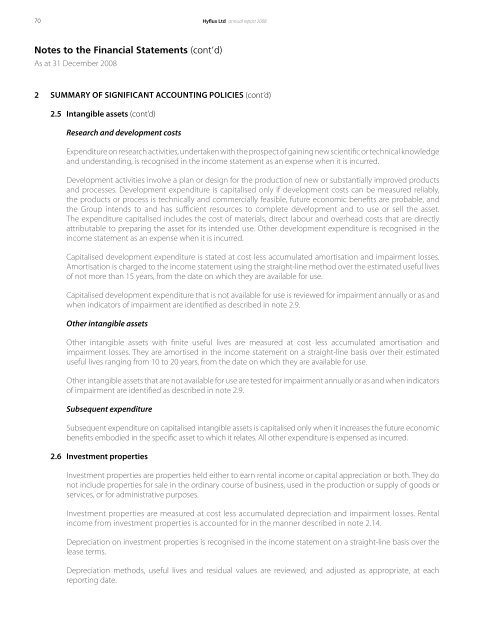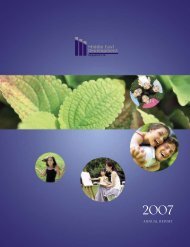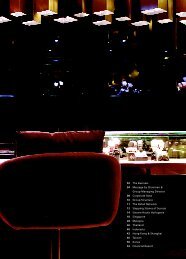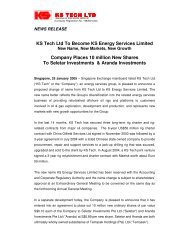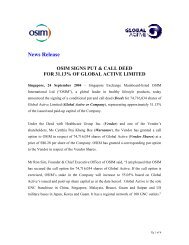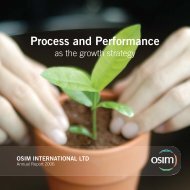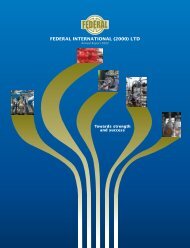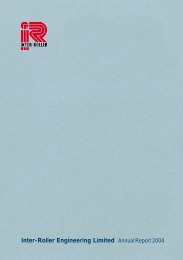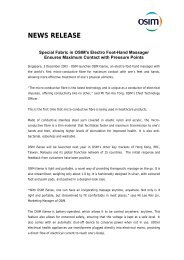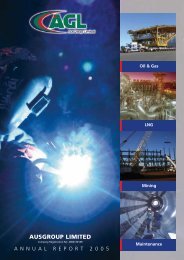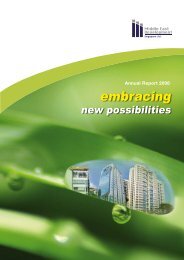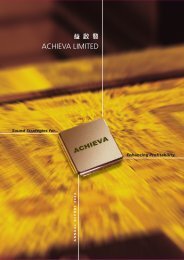WE MAKE THINGS HAPPEN
WE MAKE THINGS HAPPEN
WE MAKE THINGS HAPPEN
Create successful ePaper yourself
Turn your PDF publications into a flip-book with our unique Google optimized e-Paper software.
70<br />
Hyflux Ltd annual report 2008<br />
Notes to the Financial Statements (cont’d)<br />
As at 31 December 2008<br />
2 Summary of significant accounting policies (cont’d)<br />
2.5 Intangible assets (cont’d)<br />
Research and development costs<br />
Expenditure on research activities, undertaken with the prospect of gaining new scientific or technical knowledge<br />
and understanding, is recognised in the income statement as an expense when it is incurred.<br />
Development activities involve a plan or design for the production of new or substantially improved products<br />
and processes. Development expenditure is capitalised only if development costs can be measured reliably,<br />
the products or process is technically and commercially feasible, future economic benefits are probable, and<br />
the Group intends to and has sufficient resources to complete development and to use or sell the asset.<br />
The expenditure capitalised includes the cost of materials, direct labour and overhead costs that are directly<br />
attributable to preparing the asset for its intended use. Other development expenditure is recognised in the<br />
income statement as an expense when it is incurred.<br />
Capitalised development expenditure is stated at cost less accumulated amortisation and impairment losses.<br />
Amortisation is charged to the income statement using the straight-line method over the estimated useful lives<br />
of not more than 15 years, from the date on which they are available for use.<br />
Capitalised development expenditure that is not available for use is reviewed for impairment annually or as and<br />
when indicators of impairment are identified as described in note 2.9.<br />
Other intangible assets<br />
Other intangible assets with finite useful lives are measured at cost less accumulated amortisation and<br />
impairment losses. They are amortised in the income statement on a straight-line basis over their estimated<br />
useful lives ranging from 10 to 20 years, from the date on which they are available for use.<br />
Other intangible assets that are not available for use are tested for impairment annually or as and when indicators<br />
of impairment are identified as described in note 2.9.<br />
Subsequent expenditure<br />
Subsequent expenditure on capitalised intangible assets is capitalised only when it increases the future economic<br />
benefits embodied in the specific asset to which it relates. All other expenditure is expensed as incurred.<br />
2.6 Investment properties<br />
Investment properties are properties held either to earn rental income or capital appreciation or both. They do<br />
not include properties for sale in the ordinary course of business, used in the production or supply of goods or<br />
services, or for administrative purposes.<br />
Investment properties are measured at cost less accumulated depreciation and impairment losses. Rental<br />
income from investment properties is accounted for in the manner described in note 2.14.<br />
Depreciation on investment properties is recognised in the income statement on a straight-line basis over the<br />
lease terms.<br />
Depreciation methods, useful lives and residual values are reviewed, and adjusted as appropriate, at each<br />
reporting date.


